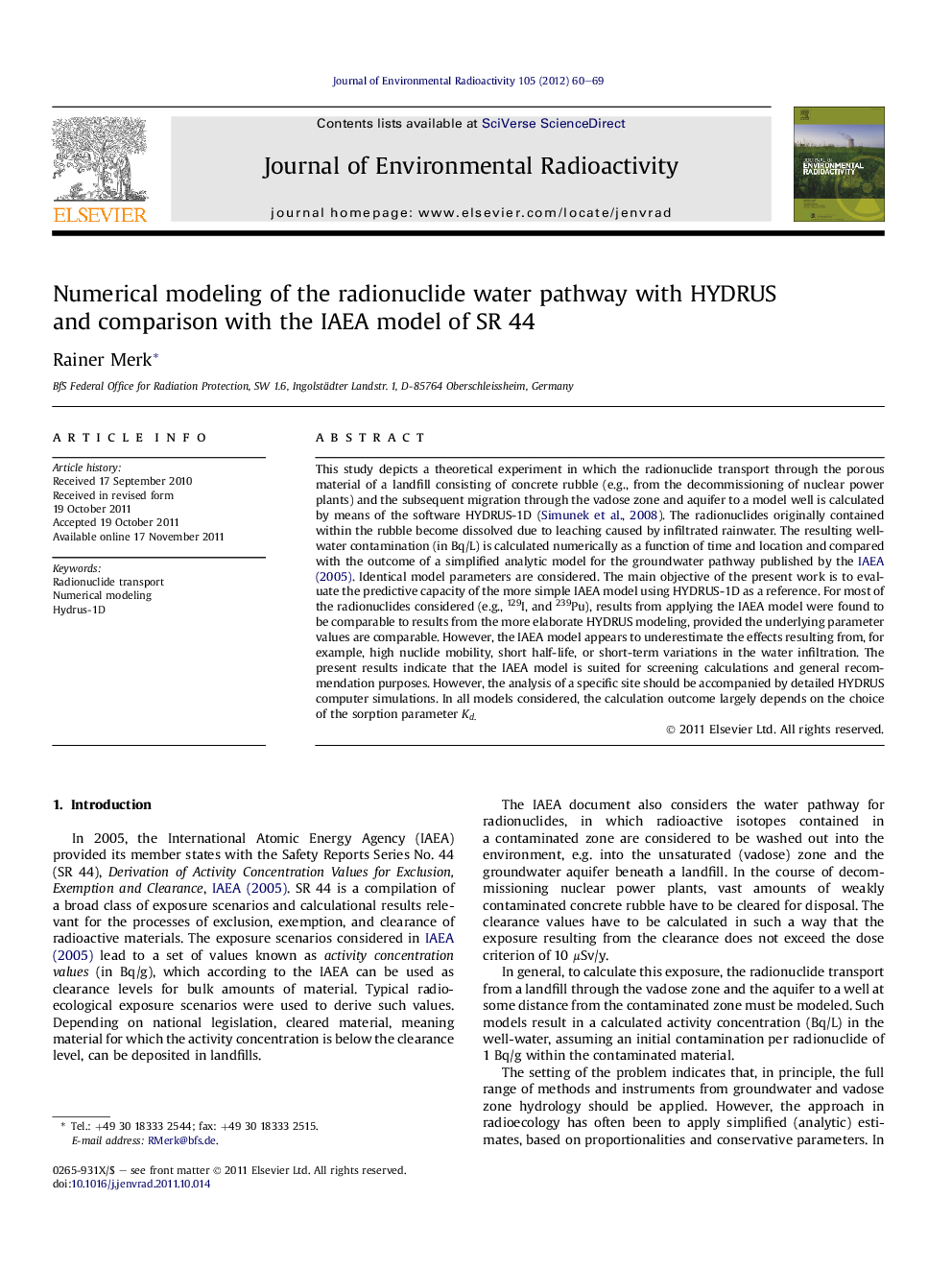| Article ID | Journal | Published Year | Pages | File Type |
|---|---|---|---|---|
| 1738477 | Journal of Environmental Radioactivity | 2012 | 10 Pages |
This study depicts a theoretical experiment in which the radionuclide transport through the porous material of a landfill consisting of concrete rubble (e.g., from the decommissioning of nuclear power plants) and the subsequent migration through the vadose zone and aquifer to a model well is calculated by means of the software HYDRUS-1D (Simunek et al., 2008). The radionuclides originally contained within the rubble become dissolved due to leaching caused by infiltrated rainwater. The resulting well-water contamination (in Bq/L) is calculated numerically as a function of time and location and compared with the outcome of a simplified analytic model for the groundwater pathway published by the IAEA (2005). Identical model parameters are considered. The main objective of the present work is to evaluate the predictive capacity of the more simple IAEA model using HYDRUS-1D as a reference. For most of the radionuclides considered (e.g., 129I, and 239Pu), results from applying the IAEA model were found to be comparable to results from the more elaborate HYDRUS modeling, provided the underlying parameter values are comparable. However, the IAEA model appears to underestimate the effects resulting from, for example, high nuclide mobility, short half-life, or short-term variations in the water infiltration. The present results indicate that the IAEA model is suited for screening calculations and general recommendation purposes. However, the analysis of a specific site should be accompanied by detailed HYDRUS computer simulations. In all models considered, the calculation outcome largely depends on the choice of the sorption parameter Kd.
► Radionuclide transport through cleared concrete rubble is calculated. ► Rubble is from decommissioning of nuclear power plants. ► Radionuclides subsequently migrate through vadose zone and aquifer. ► Calculation is done with HYDRUS-1D. Results are compared with SR 44 by IAEA. ► IAEA-model results and HYDRUS results are comparable. Kd is decisive parameter.
